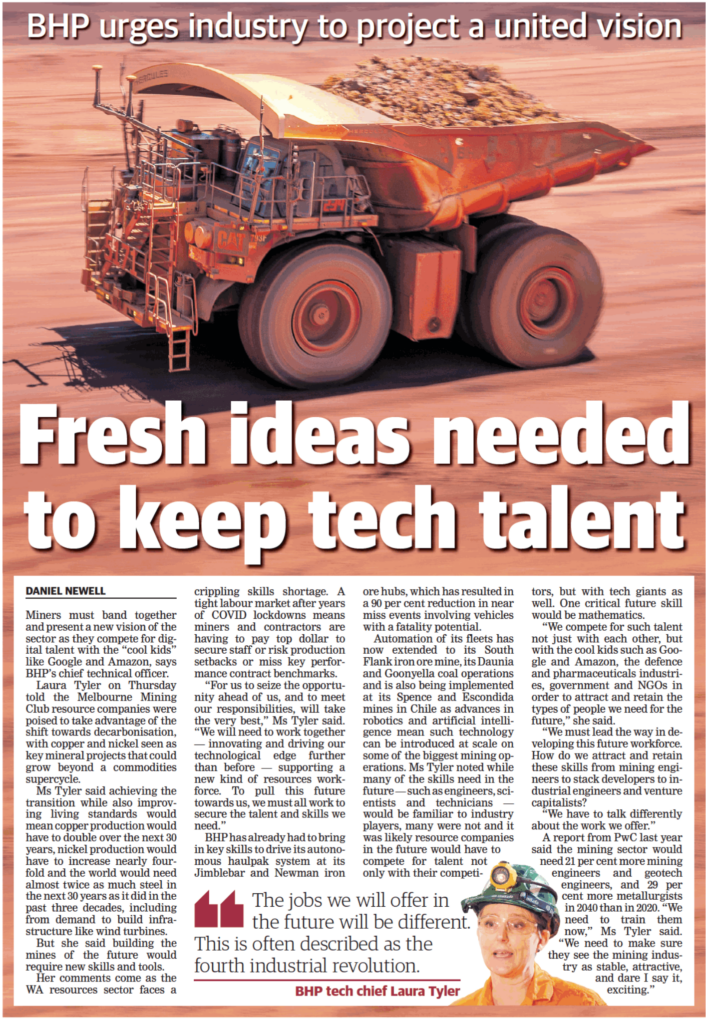

Article by Daniel Newell courtesy of the West Australian.
BHP urges industry to project a united vision.
Miners must band together and present a new vision of the sector as they compete for digital talent with the “cool kids” like Google and Amazon, says BHP’s chief technical officer.
Laura Tyler on Thursday told the Melbourne Mining Club resource companies were poised to take advantage of the shift towards decarbonisation, with copper and nickel seen as key mineral projects that could grow beyond a commodities supercycle.
Ms Tyler said achieving the transition while also improving living standards would mean copper production would have to double over the next 30 years, nickel production would have to increase nearly fourfold and the world would need almost twice as much steel in the next 30 years as it did in the past three decades, including from demand to build infrastructure like wind turbines.
But she said building the mines of the future would require new skills and tools.
Her comments come as the WA resources sector faces a crippling skills shortage. A tight labour market after years of COVID lockdowns means miners and contractors are having to pay top dollar to secure staff or risk production setbacks or miss key performance contract benchmarks.
“For us to seize the opportunity ahead of us, and to meet our responsibilities, will take the very best,” Ms Tyler said. “We will need to work together — innovating and driving our technological edge further than before — supporting a new kind of resources workforce. To pull this future towards us, we must all work to secure the talent and skills we need.”
BHP has already had to bring in key skills to drive its autonomous haulpak system at its Jimblebar and Newman iron ore hubs, which has resulted in a 90 per cent reduction in near miss events involving vehicles with a fatality potential.
Automation of its fleets has now extended to its South Flank iron ore mine, its Daunia and Goonyella coal operations and is also being implemented at its Spence and Escondida mines in Chile as advances in robotics and artificial intelligence mean such technology can be introduced at scale on some of the biggest mining operations. Ms Tyler noted while many of the skills need in the future — such as engineers, scientists and technicians — would be familiar to industry players, many were not and it was likely resource companies in the future would have to compete for talent not only with their competitors, but with tech giants as well. One critical future skill would be mathematics.
“We compete for such talent not just with each other, but with the cool kids such as Google and Amazon, the defence and pharmaceuticals industries, government and NGOs in order to attract and retain the types of people we need for the future,” she said.
“We must lead the way in developing this future workforce. How do we attract and retain these skills from mining engineers to stack developers to industrial engineers and venture capitalists?
“We have to talk differently about the work we offer.”
A report from PwC last year said the mining sector would need 21 per cent more mining engineers and geotech engineers, and 29 per cent more metallurgists in 2040 than in 2020. “We need to train them now,” Ms Tyler said. “We need to make sure they see the mining industry as stable, attractive, and dare I say it, exciting.”